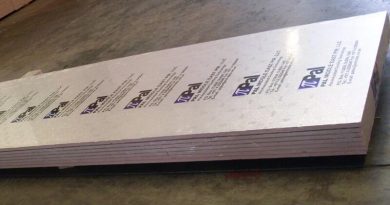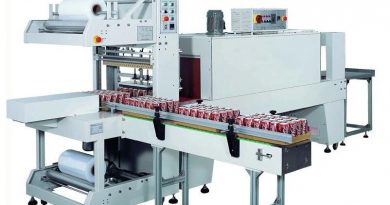What is POF? How is it Different from PVC as Shrinkwrap Packaging materials?
Shrinkwrap packaging is a common form of packaging. When we think of shrinkwrap packaging materials, we often think of PVC heat shrink film first. This was one of the earliest and most widely used packaging materials for cosmetics and department store products, possessing good heat shrinkability and a high shrinkage rate. However, in later use, we found that PVC heat shrink film is not the best quality heat shrink packaging material, especially after the US FDA banned its use in food-contact packaging. People began to look for safer and higher-performing heat shrink packaging materials. POF film is one of the most widely used alternative materials.
What is POF heat shrink packaging film?
POF is short for heat shrink film. The full name of POF is multilayer co-extruded polyolefin heat shrink film. It uses linear low-density polyethylene (LLDPE) as the middle layer and copolymer polypropylene (PP) as the inner and outer layers, formed through a three-layer extrusion process. First, it is plasticized and extruded by machine, and then processed through special processes such as molding and bubble expansion. It is currently the most widely used and fastest-growing environmentally friendly heat shrink film in the world. This product utilizes advanced biaxial stretching and three-layer melt co-extrusion processes to produce a soft heat-shrink film with safe and reliable properties, high transparency, high shrinkage rate, high toughness, high heat-sealing performance, excellent antistatic properties, and cold resistance.
Comparison of POF Heat Shrink Film and PVC Heat Shrink Film
Cost of the two shrink film materials
PVC needs to have higher thickness than POF, resulting in a higher unit cost.
Puncture Resistance of POF and PVC film
POF film is thin, strong, and flexible with high tensile strength. PVC film is thick and brittle, with uneven thickness, low strength, and poor puncture resistance.
Cold Resistance of POF and PVC film
POF film has excellent cold resistance. It does not harden or become brittle at -50℃, is not easily damaged, and can be used for frozen food packaging. After shrink packaging, the packaging material remains stable during long-term storage at temperatures ranging from -50℃ to 95℃. PVC film easily becomes brittle and breaks at low temperatures.
Processing Performance of POF and PVC film
POF film also has better processing performance than PVC film.
Safety Performance of POF and PVC film
POF film shrink-wrapping leaves soft corners that won’t cut hands, while PVC film has sharp corners that are easily cut.
Environmental and Hygiene Performance of POF and PVC film
POF film meets FDA standards and is hygienic and safe. PVC film produces harmful gases during processing and is not environmentally friendly.
| Material | Costs | Resistance | Performance | Safety | Required temperature |
| POF | Low | High | High | High | High |
| PVC | High | Low | Low | Low | Low |
Conclusion
POF has very good resistance, both puncture resistance and cold resistance. And it can be made very thin, which results to a lower cost compared with PVC film. This film is very soft, can make good package after shrinking, without the sharp corners which PVC film will have. More importantly, it’s a safe material good for packing food, no toxic gas releasing during the shrink process. But the POF film requires a higher temperature for shrinking(around 140 Celsius) which is much higher than PVC film, and it’s the only drawback of this material.





https://shorturl.fm/qFL9j
https://shorturl.fm/QnaDe
https://shorturl.fm/fW36l